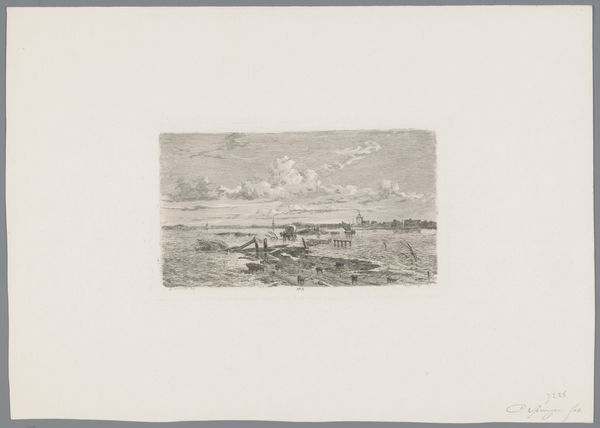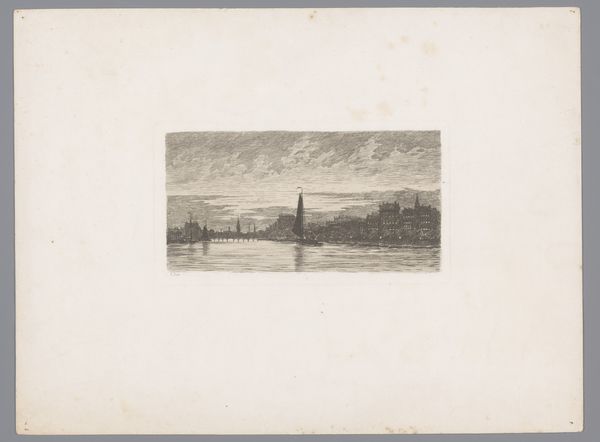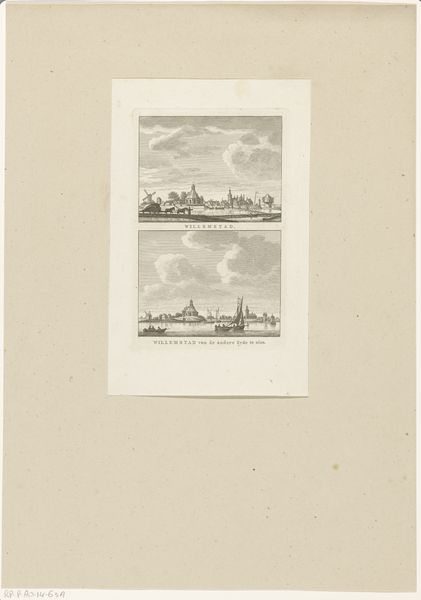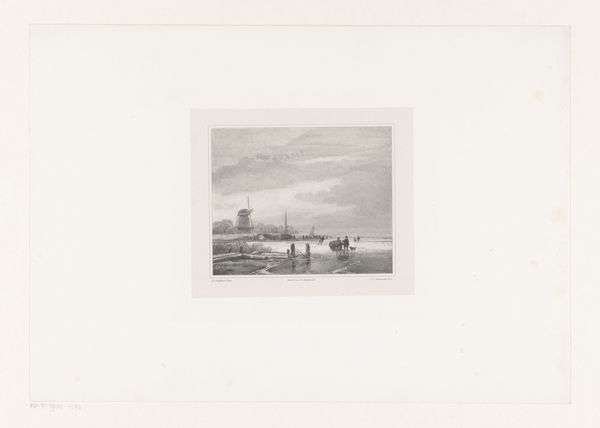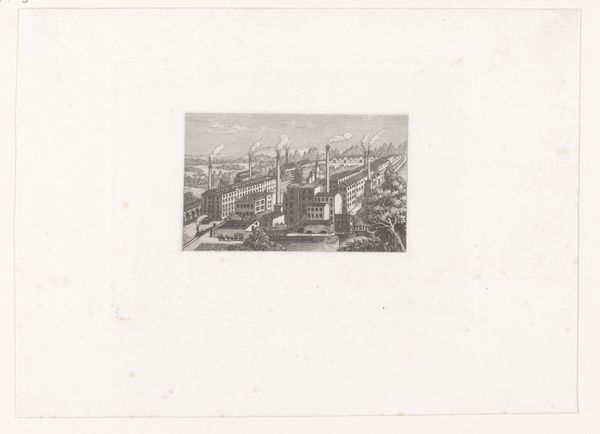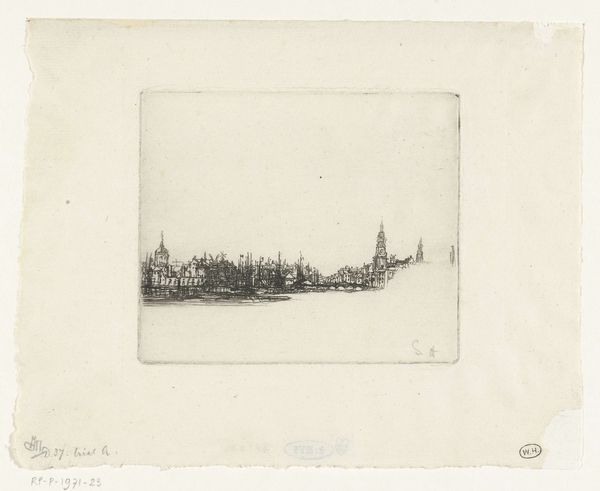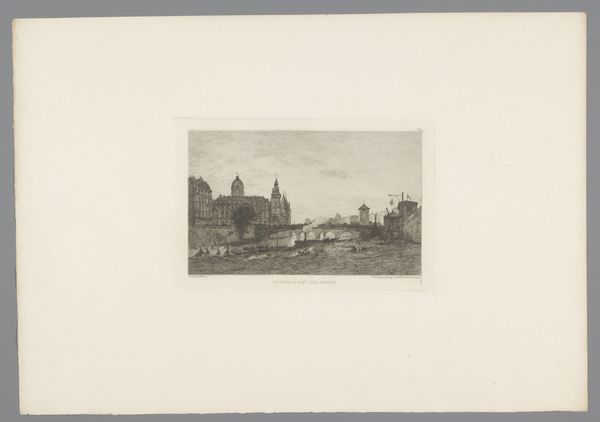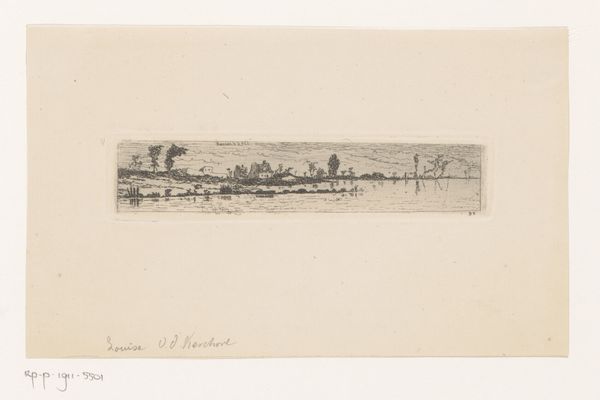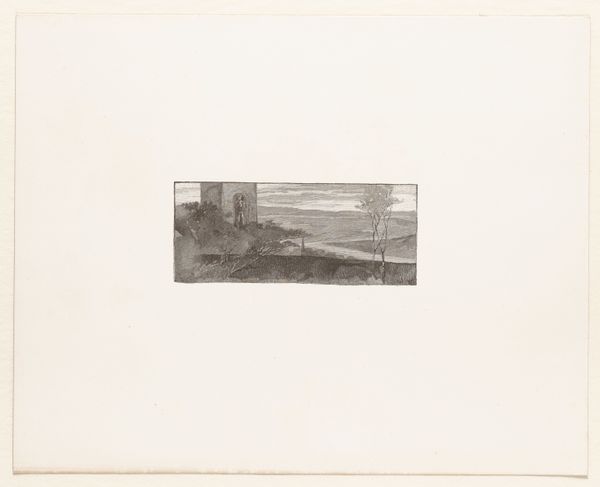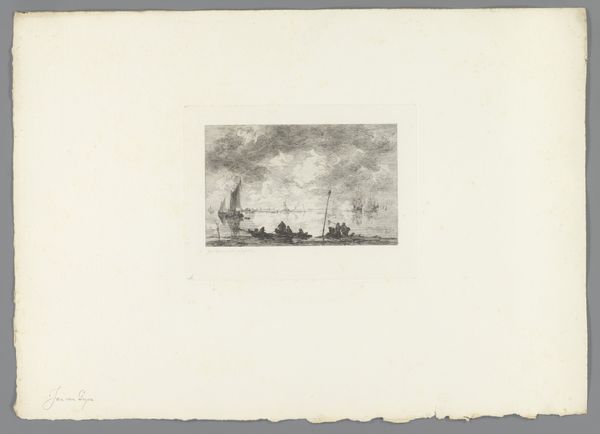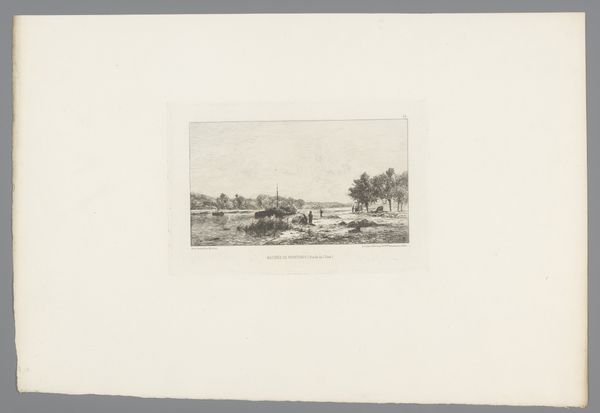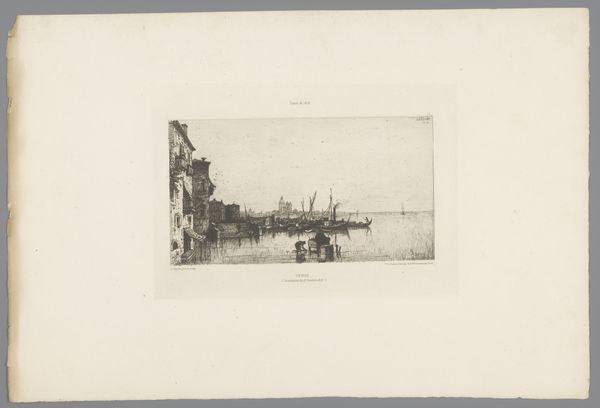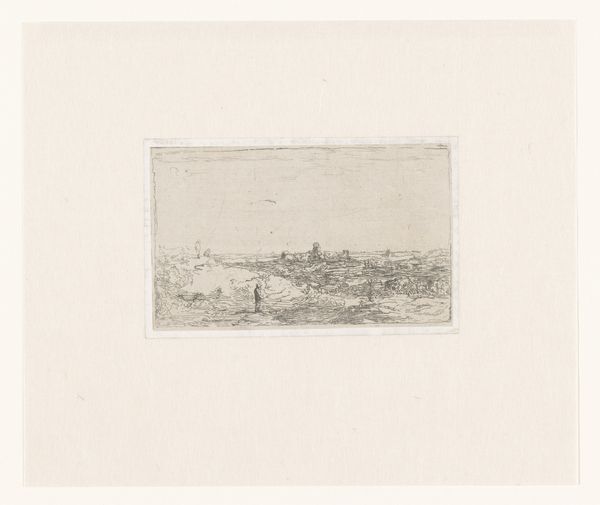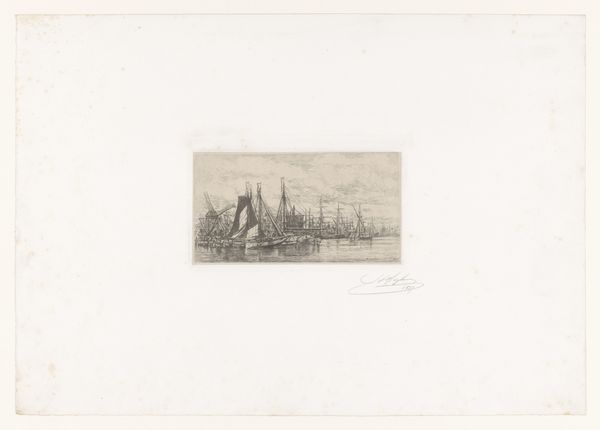
print, etching, paper
#
ink paper printed
# print
#
etching
#
landscape
#
paper
#
romanticism
#
cityscape
Dimensions: height 139 mm, width 175 mm
Copyright: Rijks Museum: Open Domain
Editor: This etching, “View of Amsterdam from the Kadijk,” by Louis Marvy, made sometime between 1825 and 1850, is just incredible. I'm really drawn to the way it captures the light and atmosphere. What strikes you most about it? Curator: For me, the interest lies in the intersection of industrial development and artistic production. It’s not just a romantic view. The very existence of this print hinges on industrial processes. Think about the production of the paper, the ink, the printing press itself – each relies on increasingly complex material systems. Editor: That’s interesting. So, you see it less as a picturesque scene and more as an artifact of industrial advancement? Curator: Precisely. Consider the labor involved in each stage – from papermaking to etching the plate to pulling each print. Marvy wasn’t just an artist; he was also a worker within this emerging system of mass production. This etching blurs the lines between "high art" and industrial craft. Editor: So, how does viewing it through a materialist lens change our understanding of Romanticism? Curator: It complicates it. Instead of seeing Romanticism as purely an escape from industrial life, we see it grappling with, and even dependent on, industrial advancements for its dissemination and reach. Editor: I hadn’t thought of it that way. So, by focusing on the materials and processes, we get a more nuanced understanding of the artwork's place in society? Curator: Exactly. We can examine the role that increasing commodification and consumption plays within artistic movements. What are the means of production? Where does the material come from? Editor: Wow, I’m never going to look at an etching the same way again! I now wonder what Marvy thought about his work being viewed like this. Curator: These are good questions, considering how images become ubiquitous. By appreciating how the etching was manufactured we can reevaluate the work's social purpose.
Comments
No comments
Be the first to comment and join the conversation on the ultimate creative platform.
